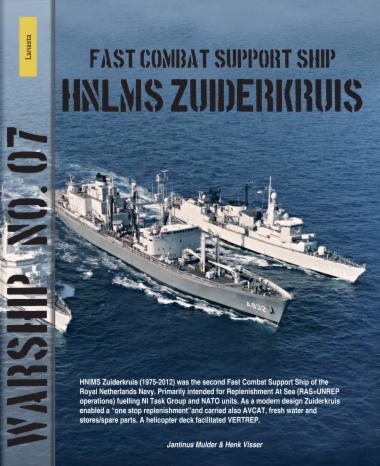HNLMS Zuiderkruis (1975-2012) was the second Fast Combat Support Ship of the Royal Netherlands Navy. It was primarily intended for Replenishment At Sea, fueling task groups and NATO units. As a modern design Zuiderkruis enabled a “one stop replenishment” and also carried AVCAT, fresh water and spare parts. A helicopter deck facilitated vertical replenishment.

